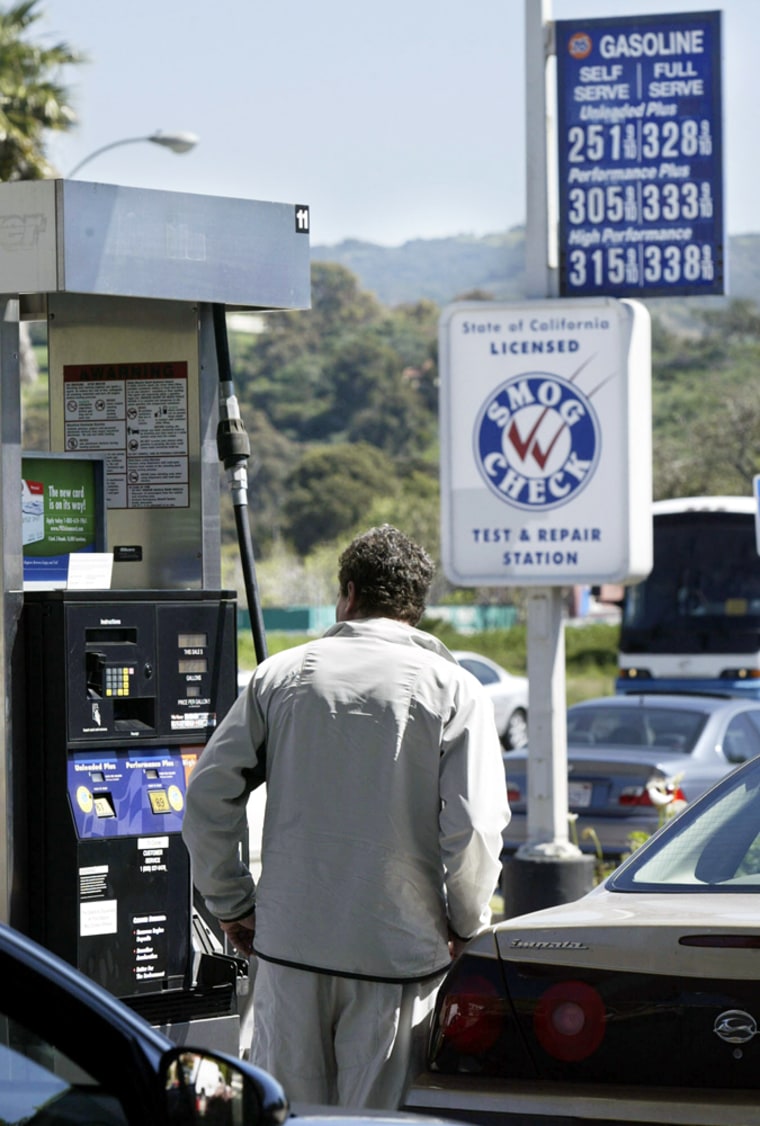Soaring crude oil prices and growing demand — especially in China and India — have pushed retail gasoline prices at U.S. pumps to a record average of $2.055 a gallon Thursday, AAA reported Thursday.
When adjusted for inflation, the highest price for gasoline was over $3.00 a gallon in the spring of 1981, according to the U.S. Department of Energy.
Crude oil futures, meanwhile, traded above $57 a barrel Thursday despite an Organization of Petroleum Exporting Countries (OPEC) pledge to increase output, which failed to reassure traders worried about tight supply.
Light sweet crude for April delivery rose to a new intraday high of $57.60 per barrel before retreating to settle at $56.40, a decline of 6 cents that traders attributed to profit-taking.
OPEC said Thursday it may begin talks next week to trigger a second output rise as dealers shrugged off the cartel’s agreement Wednesday to raise production.
“If prices continue as they are now, then starting from next week we will start our discussions,” OPEC President Sheikh Ahmad al-Fahd al-Sabah of Kuwait told reporters.

“Still, we think there is enough supply in the market, but even if another 500 [500,000 barrels per day] means oversupply, we will take the decision. This is our part of sharing the responsibility.”
OPEC agreed on Wednesday to lift output by 500,000 barrels per day, 2 percent, with immediate effect. The deal permits the addition after consultation by telephone among ministers of a further 500,000 barrels per day if oil prices fail to ease below $55 for benchmark U.S. crude.
Market unimpressed by OPEC
The market was unimpressed with OPEC’s decision, because members of the oil cartel who are supposedly bound by its production quota are already exceeding the previous ceiling by about 700,000 barrels a day — meaning no extra supply will actually be added.
OPEC President Sheik Ahmed Fahd Al Ahmed Al Sabah also said the additional barrels may not come until May, since members are already supplying more than planned.
“This is not about lowering prices. It’s about stopping them skyrocketing,” Yasser Elguindi of New York-based Medley Global Advisers said on the International Oil Daily Web site. “We are going to be either side of $50 with spikes to around $60.”
Traders are worried that demand could soon outstrip supply. China, the world’s second-biggest oil consumer after the United States, is already guzzling more than a third of the world’s crude supplies. Chinese fuel use will rise 7.9 percent this year, or 500,000 barrels a day, to 6.88 million barrels a day, according to the Paris-based International Energy Agency.
The agency said last week it expects petroleum needs this year to increase 2.2 per cent, by 1.81 million barrels a day, to a new daily total of 84.3 million barrels.
Crude futures shot up more than $1 a barrel Wednesday after the latest petroleum supply report from the U.S. government showed a sharp drop in domestic supplies of gasoline and heating oil last week.
In its report for the week ending March 11, the Energy Information Administration said gasoline stocks fell by almost three times more than expected, by 2.9 million barrels, to 221.4 million barrels, compared with consensus forecasts for an increase of 800,000 barrels.
